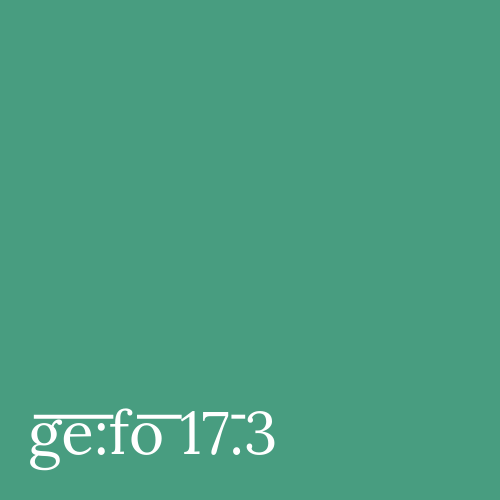“Raging Bull:” Contesting Masculinity in Joyce Carol Oates’ A Book of American Martyrs (2017)
DOI:
https://doi.org/10.18716/ojs/gefo/2018.2474Keywords:
Joyce Carol Oates, A Book of American Martyrs, masculinity, genderAbstract
Dawn Dunphy in Joyce Carol Oates’ 2017 novel A Book of American Martyrs is used to women’s bodies being controlled and defined by men: she has grown up with an image of female sexuality as impure and contemptible, and as a teenager she has been raped by a gang of schoolboys. However, Dawn is not simply a victim, but from her early teenage years struggles to regain control over her life and body. In fact, her rape provides a cathartic moment for her: she rejects stigmatization and takes violent revenge on her rapists. Driven by the wish to fight men, her hammer-wielding vengeance leads Dawn to go into women’s boxing – where, however, she immediately finds herself the object of male assessment again, as female boxers have to play certain, sexualized roles for the eyes of the predominantly male audience.
Female masculinity, my essay will argue, provides the means for Dawn to reject male claims of control over the female body: through her performance as a boxer, Dawn challenges notions of femininity and masculinity and lays claim to an almost gender-neutral identity. She chooses a new, gender-neutral name, D.D., and in an echo of her rape revenge she picks the boxing name “Hammer of Jesus.” What is more, D.D. refuses external ascriptions and to don the sexualizing attire other female boxers wear. Instead, through representation of her body by means of clothes, tattoos, and hairstyle she uses the body itself as a marker of power, to “transform mechanisms of masculinity and produce new constellations of embodiment, power, and desire” (Halberstam 276). The disgusted and negative reactions of the men around her show how successful her attempt at defying notions of gender indeed is. Thus, female masculinity becomes the means for D.D. to reassert control over her own body by rejecting the objectifying male gaze. She challenges masculine power by messing up what masculinity means and who has a claim to it: “The boxing ring, obviously, has become the arena for the most public contests over the meaning of masculinity and its relation to male embodiment” (Halberstam 272).



